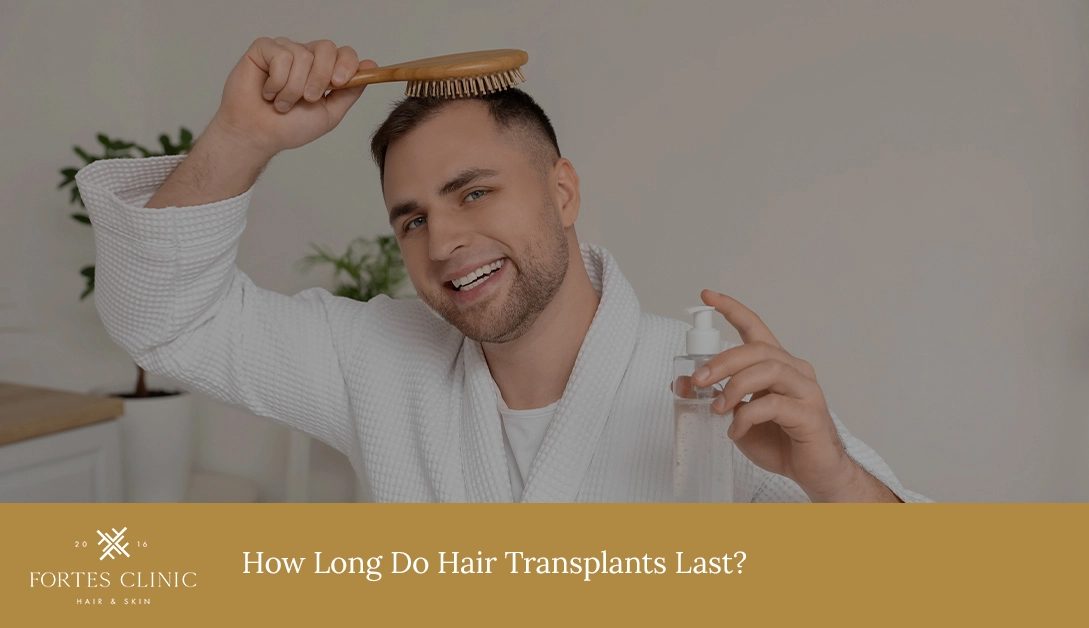Introduction
Hair loss is a common concern that affects millions of people worldwide, leading many to seek effective solutions to restore their hair and confidence. Among the various options available, hair transplants have emerged as one of the most reliable and long-lasting treatments. But, a common question arises: How long do hair transplants last? Understanding the longevity of a hair transplant is crucial for anyone considering this procedure. This article delves deep into the factors that influence the duration of hair transplant results, providing a comprehensive guide to help you make an informed decision.
Understanding Hair Transplants
Hair transplantation is a surgical procedure designed to restore hair in areas affected by thinning or balding. The procedure involves transferring hair follicles from a donor site—typically the back or sides of the head, where hair is more resistant to balding—to a recipient site, which is the area experiencing hair loss.
The procedure is typically performed under local anaesthesia and can take several hours, depending on the extent of the transplant. The surgeon carefully extracts hair follicles from the donor site and meticulously implants them into tiny incisions made in the balding area. The goal is to achieve a natural-looking hairline and fuller hair coverage.
Types of Hair Transplants (FUE vs. FUT)
There are two primary types of hair transplant techniques: Follicular Unit Extraction (FUE) and Follicular Unit Transplantation (FUT). FUE involves extracting individual hair follicles from the donor area and transplanting them to the recipient area, minimising scarring and recovery time. FUT, on the other hand, involves removing a strip of scalp from the donor area, dissecting it into individual follicular units, and transplanting them to the recipient area. Each technique has its advantages, and the choice depends on the patient’s needs, the surgeon’s expertise, and other factors.
Who is an Ideal Candidate?
Not everyone is a suitable candidate for a hair transplant. Several factors determine whether someone is ideal for the procedure.
Factors that Influence Suitability
An ideal candidate typically has sufficient donor hair, stable hair loss, and a healthy scalp. The quality and density of the donor hair are crucial because they determine the outcome’s success. Individuals with certain medical conditions, such as uncontrolled diabetes or coagulation disorders, may not be suitable candidates.
Common Conditions Addressed by Hair Transplants
Hair transplants are primarily used to treat male and female pattern baldness, a genetic condition that causes hair loss in a predictable pattern. They can also be effective for restoring hair lost due to trauma, burns, or surgical procedures. In some cases, hair transplants are used to enhance the density of eyebrows, beards, and other facial hair.
The Longevity of Hair Transplants
Immediate vs. Long-Term Results
One of the most common concerns among potential patients is understanding the difference between immediate and long-term results of a hair transplant.
Post-Procedure Shedding
It is normal for transplanted hair to shed within the first few weeks after the procedure. This shedding, known as “shock loss,” is a temporary phase and should not be a cause for concern. The transplanted follicles enter a resting phase before new hair growth begins.
Growth Phases of Transplanted Hair
The transplanted hair typically starts to regrow within three to four months after the procedure. The hair initially grows as fine, thin strands but gradually thickens over time. Full results are usually visible after 12 to 18 months, showcasing the final density and coverage.
Factors That Influence How Long Hair Transplants Last
Several factors can affect the longevity of hair transplant results, and understanding these can help manage expectations.
Quality of the Donor Hair
The durability and quality of the transplanted hair largely depend on the quality of the donor hair. Hair from the back and sides of the scalp is often more resilient to balding, making it the preferred donor site.
Surgeon’s Skill and Experience
The skill and experience of the surgeon play a critical role in the success of a hair transplant. A highly skilled surgeon ensures that the grafts are implanted at the correct angle, density, and direction, contributing to a natural and long-lasting result.
Patient’s Age and Health
A patient’s age and overall health also affect the longevity of the transplant. Younger patients may require additional procedures as they age and continue to lose their natural hair. Conversely, older patients with stable hair loss patterns are less likely to need future transplants.
Post-Transplant Care and Maintenance
Following post-operative instructions is vital for ensuring the success and longevity of the transplant. Proper care, such as avoiding direct sunlight, refraining from strenuous activities, and following a recommended hair care routine, can significantly impact the results.
Average Longevity of Hair Transplants
Hair transplants are considered a permanent solution because the transplanted hair follicles are resistant to the effects of dihydrotestosterone (DHT), the hormone responsible for genetic hair loss.
Clinical Studies and Findings
Clinical studies have shown that hair transplants can last a lifetime if performed correctly and with proper care. However, individual results may vary based on genetics, health conditions, and adherence to post-operative care guidelines.
Patient Testimonials and Real-World Data
Many patients report high satisfaction with their hair transplant results, often citing that their new hair looks natural and grows similarly to their original hair. Real-world data suggest that most patients retain the majority of their transplanted hair for many years after the procedure.
Enhancing the Longevity of Hair Transplants
Importance of Following Post-Operative Instructions
Following your surgeon’s post-operative instructions is essential to ensure optimal healing and growth of the transplanted hair.
Immediately after the procedure, patients must avoid touching or scratching the recipient area to prevent dislodging the grafts. Keeping the scalp clean and following prescribed medications to reduce swelling and prevent infection are crucial steps.
Long-term care involves gentle hair washing, avoiding harsh hair products, and protecting the scalp from direct sunlight and trauma. Regular check-ups with the surgeon can help monitor the transplant’s progress and address any concerns.
Lifestyle Factors
Certain lifestyle factors can significantly impact the longevity of hair transplant results.
- Diet and Nutrition: A balanced diet rich in vitamins and minerals supports healthy hair growth. Foods high in protein, iron, zinc, and vitamins A, C, and E are particularly beneficial for hair health.
- Stress Management: Stress can contribute to hair loss, even after a transplant. Engaging in stress-reducing activities such as yoga, meditation, and regular exercise can promote overall well-being and hair health.
- Avoiding Harmful Practices: Avoiding smoking and excessive alcohol consumption is advisable, as these can negatively affect blood flow to the scalp and impede hair growth. Additionally, protecting the scalp from excessive sun exposure and avoiding tight hairstyles can help maintain the health of the transplanted hair.
Use of Adjunct Treatments
Certain treatments can complement hair transplants and help enhance the results.
- Medications (Minoxidil, Finasteride): Medications like Minoxidil and Finasteride can help prevent further hair loss and support the growth of transplanted hair. These treatments are often recommended as part of a comprehensive hair restoration plan.
- PRP Therapy (Platelet-Rich Plasma): PRP therapy involves injecting platelet-rich plasma derived from the patient’s blood into the scalp to promote healing and stimulate hair growth. This treatment can be used alongside hair transplants to enhance results.
- Laser Therapy: Low-level laser therapy (LLLT) is a non-invasive treatment that uses light energy to stimulate hair follicles and promote growth. It can be an effective adjunct therapy to support the longevity of hair transplant results.
Myths and Misconceptions About Hair Transplant Longevity
“Hair Transplants are Temporary”
A common misconception is that hair transplants are a temporary solution. While the transplanted hair is permanent, the surrounding natural hair may continue to thin over time, potentially creating the illusion that the transplant is fading.
“Transplanted Hair Requires Special Products to Last”
While proper hair care is important, transplanted hair does not require special products to maintain its longevity. Regular, gentle hair care is usually sufficient to keep the transplanted hair healthy.
“All Hair Transplants Fail Eventually”
Another myth is that all hair transplants will fail over time. In reality, hair transplants are considered a long-lasting solution, with many patients enjoying their results for decades.
When to Consider a Second Hair Transplant
In some cases, patients may consider a second hair transplant to achieve their desired results or address new areas of thinning.
- Areas of Thinning or Balding: If new areas of thinning or balding emerge after the initial procedure, a second transplant may be necessary to maintain a uniform appearance.
- Dissatisfaction with Previous Results: If a patient is dissatisfied with the density or appearance of their initial transplant, a follow-up procedure can help improve the outcome.
How Long Should You Wait Between Procedures?
The timing between procedures is crucial to ensure the best possible results.
Recovery Time Considerations
Patients should wait at least 12 months between hair transplants to allow the scalp to fully heal and the results of the first procedure to stabilise. This waiting period also allows the surgeon to assess the initial results and plan for any further procedures.
Maximising Results from Initial Procedure
Maximising the results from the initial procedure involves following all post-operative care instructions and maintaining a healthy lifestyle to support hair growth.
Summary
Hair transplants provide a highly effective and often permanent solution for those experiencing hair loss, with results that can last a lifetime when performed correctly and maintained properly. The longevity of a hair transplant depends on various factors, including the quality of the donor hair, the skill of the surgeon, patient health, and post-transplant care.
For those considering a hair transplant, consulting with a qualified and experienced surgeon is crucial to understand the potential outcomes and develop a personalised treatment plan. With the right approach and care, hair transplants can offer a long-lasting solution, restoring not only hair but also confidence and a sense of well-being.
Keen to learn more? Book your consultation online with our friendly team today!



